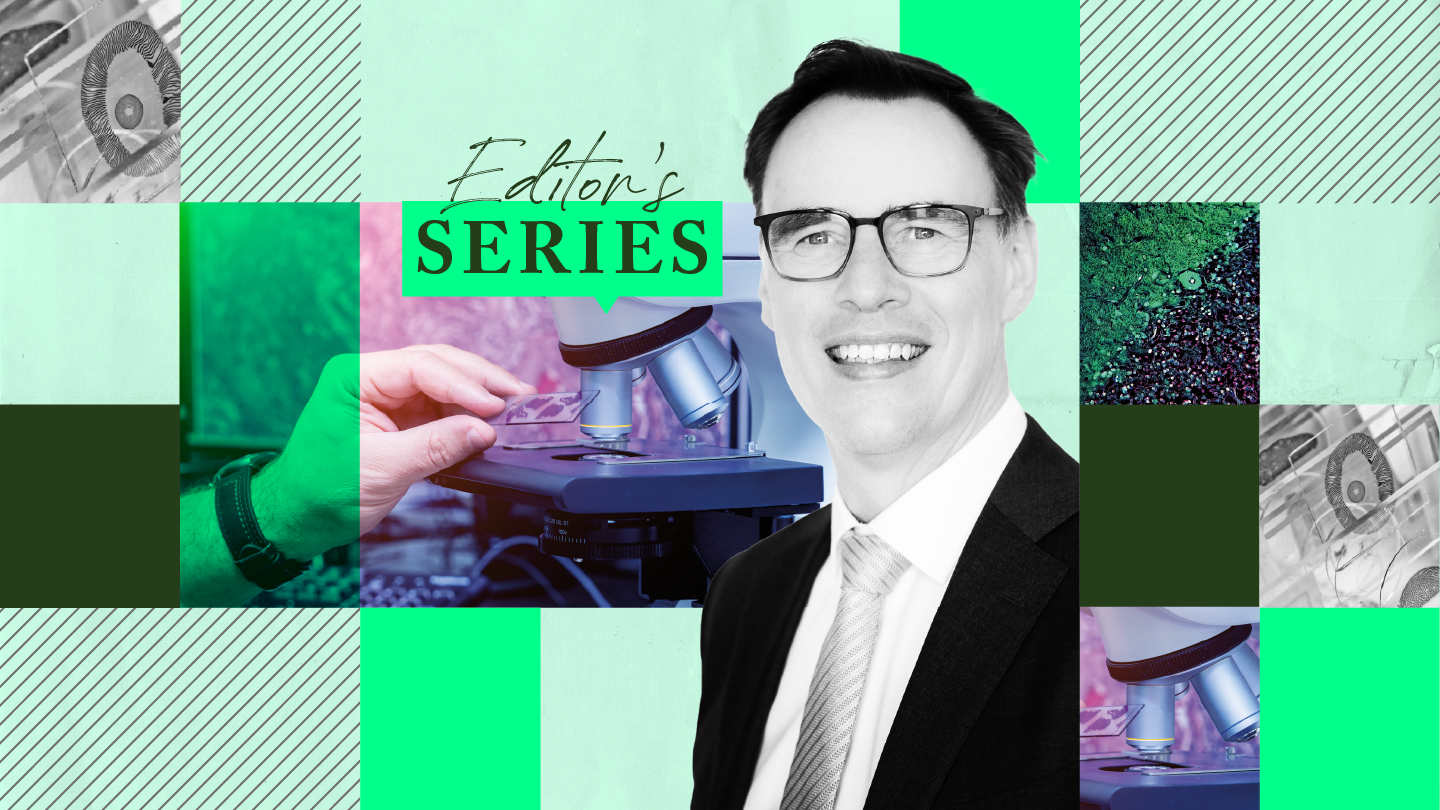Supported by


How did you find your way to pathology?
At school I was interested in sciences that challenged analytical thinking – mathematics, physics, chemistry, and astronomy. I also liked biology, but as an analytical tool to understand how the human body works, what can go wrong, and what we can infer about disease from that knowledge.
When it came to higher education, I initially considered mathematics. But, uncertain where that path could take me, I eventually opted for medicine because the career options were better defined.
It was not until my second year of studies that I was introduced to pathology. I was immediately fascinated by the beauty of the colors, structures, and patterns I saw under the microscope. My analytical brain immediately began looking for the differences between normal and abnormal tissue.
Later in my studies I took the opportunity of a three-month pathology placement at the University of Budapest. That confirmed my interest and, after graduating, I went on to do a Phd in prostate cancer that combined pathology, urology, and basic science.
Even now, when I look into the microscope, I compare it to walking through the Louvre or a flower garden – and I’m actually paid to do it!
How would you summarize your contribution to the field of genitourinary pathology?
My research on prostate cancer has focused on understanding the tumor on the basis of what we can see under the microscope combined with what we can determine about its molecular biology, and what that means for the patient. It’s that triangle of morphology, biology, and clinical impact that really fascinates me.
Some people have the perception that pathologists have no direct impact on clinical care. But, personally, I don’t agree with that at all. The work of my group has resulted in changes to the guidelines for treatment thresholds in patients. Because of our research, a population of men with prostate cancer, who previously would have been automatically operated on, are now put on active surveillance instead. That has a major impact on their quality of life.
How did your role as director of the pathology residency program at Erasmus MC shape your views on medical education?
I found it fascinating, and really quite inspiring, to work with young people at the start of their careers. And I saw that a lecturer’s own enthusiasm and passion for their subject is crucial in inspiring the next generation of practitioners. I find pathology fascinating, and I love talking about it, so I hope I was a good role model.
But I also learned that, to be a good role model, it’s important for your students to understand that your way of doing things is only one way, and is not necessarily the gold standard; somebody else might do it differently. In that way, students can look at processes or research more critically and learn to think, “How would I do it better?”
Nowadays, my involvement in education is in organizing training events such as workshops, courses, and consensus meetings for international societies. The challenge now is to really understand my audience and their needs. Two presentations with the same title, delivered to audiences of pathologists or urologists, would look completely different and have very different key messages. I really enjoy putting them together.
What have you learnt from working with the Erasmus MC Tissue Bank?
Whilst we are very lucky to have access to an incredible tissue bank here, I would like to see it do more than just store paraffin blocks or frozen sections. The real value will come when we can connect the tissues with the patients, to show the patient information, the clinical follow-up, maybe even the molecular analysis that was performed, and what it showed.
It will be quite challenging to capture all these data together, but, when we do, the bank will become a goldmine. It will allow pathologists and oncologists to start connecting things we might never have thought of.
What is the most interesting thing you’ve learned in your career?
That came about in the last few years with the advent of spatial imaging. Until then, I had only ever seen cancer in two dimensions, on a glass slide. But these new imaging techniques have allowed us to see the three-dimensional structures of normal prostate glands, compare them to cancerous glands, and examine the growth patterns.
Finally seeing the three-dimensional background of this disease I’ve been studying for over 20 years was one of the most fascinating learnings of my career.
What are the biggest challenges currently facing pathology, in your opinion?
Detailed knowledge of one area is so important for prognostic work and a deep understanding of the treatment options. It’s demanded by clinicians and patients, and is very impactful in terms of patient outcomes. Since the number of pathologists is limited, the challenge will be balancing in-depth knowledge with guaranteed coverage of all subspecialties.
What innovations in diagnostics are you most excited about?
Genitourinary cancer is behind lung and breast cancer in terms of precision medicine. I’m excited about seeing an acceleration of companion diagnostics for bladder and prostate cancer in the next few years, as more and more molecular therapeutic targets are discovered.
The problem is that molecular tests are very expensive. But the more we can connect molecular aberrations with tumor morphology, the more likely we will be able to predict a patient’s likelihood of having a particular oncogenic driver mutation from the biopsy, and reduce the number of molecular tests required.
What advice would you give to someone starting out on their pathology career?
Mainly just to enjoy it – enjoy looking at the fascinating colors and structures and solving the puzzles.
And try to forge your experience across the whole broad field of pathology in those early years. You will have plenty of time to specialize later on, if you choose.
This Article is included in the Johnson&Johnson Editor's Series on genitourinary pathology.




